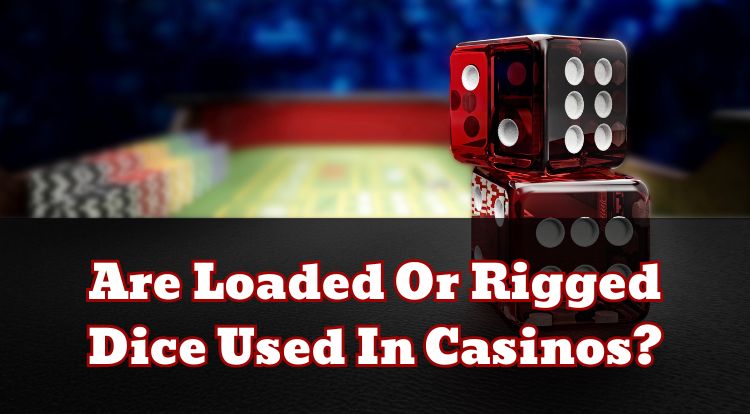Craps “Don’t Come” & “Don’t Pass” Bets Explained
Curious about craps but find the terminology a bit puzzling? With terms like “Don’t Come” and “Don’t Pass,” it’s easy to feel lost in the world of dice and chips.
This blog post is here to cut through the confusion and guide you through what these bets mean and why some players choose them, helping you understand the game better the next time you find yourself at a craps table.
Whether you’re an enthusiastic beginner or just looking to learn something new, join us as we explain these betting options.
What Is “Don’t Pass” In Craps?
The “Don’t Pass” bet in craps is quite straightforward. Consider it as betting against the shooter or the person rolling the dice. This may seem a bit counterintuitive since most players at the table are likely to want the shooter to succeed.
When you place a “Don’t Pass” bet, you’re anticipating an outcome with numbers different from those the shooter aims for. Initially, you’re hoping for the shooter to roll a 2 or a 3 on the first go, known as the “come-out roll,” which results in a win for this bet type.
However, if a 7 or 11 appears on the come-out roll, your bet does not succeed. If the shooter rolls a 12, the bet results in a tie, meaning you neither win nor lose.
If any other number is rolled, this becomes the “point,” and your focus shifts to hoping a 7 is rolled before the point is rolled again. If a 7 appears first, the “Don’t Pass” bet wins.
What Is “Don’t Come” In Craps?
The “Don’t Come” bet is quite like the “Don’t Pass” bet but occurs at a different stage during the game, becoming relevant once a point has already been established in the round. Here, you’re betting in a manner similar to betting against the shooter, much like with the “Don’t Pass” bet.
Here’s the process: after a point is set, you place a “Don’t Come” bet. If the shooter rolls a 2 or 3, the bet results in a win.
Alternatively, if a 7 comes up following your “Don’t Come” wager, the bet is successful; however, if the point number is rolled again before a 7, the bet does not succeed.
If the roll results in a 12, this is considered a tie, and your bet neither wins nor loses. Any other number that appears becomes the new “Don’t Come” point, resulting in you hoping for a 7 before that number appears again.
Don’t Come Odds and Payout
When placing a “Don’t Come” bet, understanding the odds and payout structure is important for managing your expectations. In the game of craps, the odds are relatively straightforward, which can help you play with a clear mind.
Once you’ve placed your “Don’t Come” bet, there’s an option to place additional odds behind it after the point has been established. These odds are considered an extra wager with payouts that match true odds, helping to lower the house edge.
The payout for these odds varies depending on the point number. For example, if your point is 4 or 10, the payout is 1 to 2. If the point is 5 or 9, it’s 2 to 3. For a point of 6 or 8, the payout is 5 to 6.
Remember, the base “Don’t Come” bet pays even money. This means if you win this bet without additional odds, you’ll receive a 1 to 1 payout.
Play Slots & Online Casino Games
Don’t Pass Odds and Payout
Understanding the odds and payouts for a “Don’t Pass” bet is an important aspect of playing craps. Once you’ve placed your “Don’t Pass” bet, you have the option to add odds behind it after the point is set.
These odds represent an additional wager that doesn’t increase the house edge and offers true odds based on the point number. The payout depends on which number becomes the point.
Similar to “Don’t Come” bets, if the point rolled is 4 or 10, the payout is 1 to 2. For points of 5 or 9, the payout is 2 to 3. If the point is 6 or 8, the payout is 5 to 6.
Your original “Don’t Pass” wager pays even money, meaning if this bet is successful without added odds, you’ll receive a 1 to 1 payout.
Betting Pass vs Don’t Pass
When deciding between a “Pass” and a “Don’t Pass” bet in craps, it’s helpful to understand what each option entails. These choices offer distinct ways to play the game, improving its overall versatility and appeal.
A “Pass” bet is often chosen by players who align their wagers with the shooter’s success. In this case, you’re looking for a 7 or 11 on the come-out roll. If a 2, 3, or 12 is rolled, the bet doesn’t succeed. If another number appears, it becomes the point, and you’re aiming for it to be rolled again before a 7.
Alternatively, a “Don’t Pass” bet offers a different approach. Here, you’re looking for a 2 or 3 on the come-out roll. If a 7 or 11 appears, the bet is unsuccessful, and a 12 results in a tie. After a point is set, you’re anticipating a 7 before the point number resurfaces.
Selecting between these bets depends on your preferred style of play, bringing an element of choice to your craps experience.
Play Casino Games Online at Red Casino
Looking for a reliable and enjoyable online casino experience? Red Casino’s platform offers a wide selection of games, making it easy for you to find something that suits your taste, whether you’re interested in classic games like blackjack and roulette or exploring the variety of slots.
Joining Red Casino is simple and user-friendly. Once you’re signed up, you can enjoy playing from the comfort of your own home or at a time and place that suits you, thanks to our mobile-friendly site. Our games are designed to provide a smooth and enjoyable experience for players of all levels.
At Red Casino, we put your safety and security first, ensuring your personal information is protected. Our professional customer support team is also available around the clock to assist you with any questions.
Always remember to gamble responsibly. Ensure you have an enjoyable gaming experience by setting limits to your playing time, sticking to a strict budget within your means and making use of any safe gambling tools available.
*All values (Bet Levels, Maximum Wins, etc.) mentioned in relation to this game are subject to change at any time. Game features mentioned may not be available in some jurisdictions.
**The information provided in this blog is intended for educational purposes and should not be construed as betting advice or a guarantee of success. Always gamble responsibly.
































































